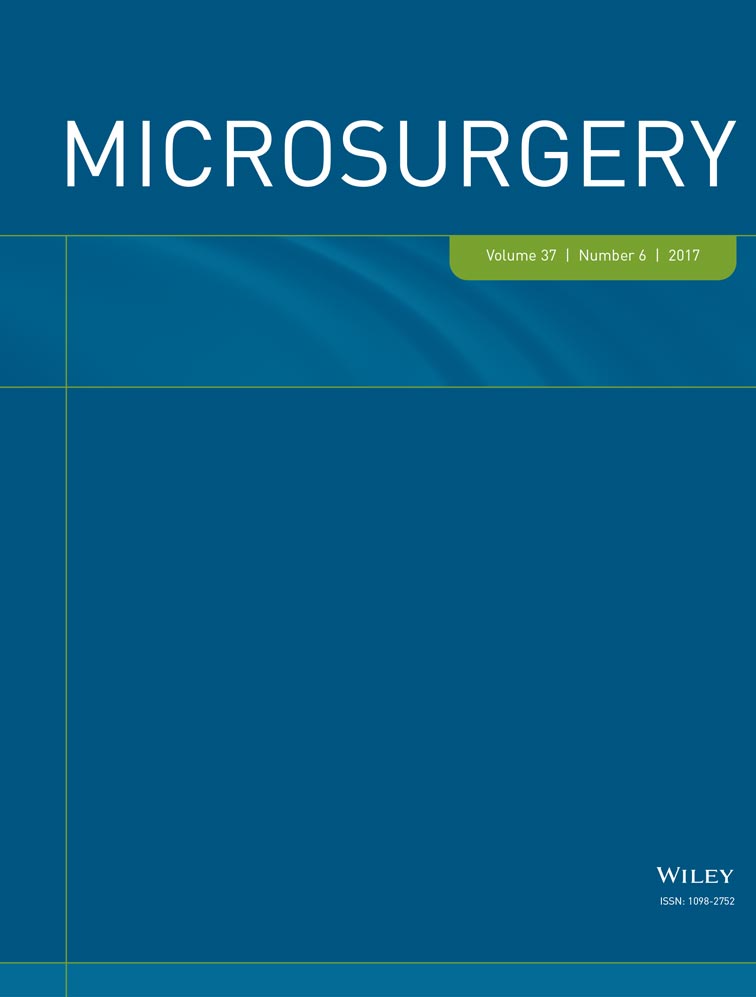The maxillary artery as a recipient vessel option for complex midface and anterior skull base microsurgical repair: A cadaveric study
Abstract
Introduction
Variations in the operative situation for complex head and neck defect reconstructions resulting from mechanisms such as trauma, oncologic resection, and prior radiation exposure can result in situations of a vessel-depleted neck. This requires an awareness of alternate, innovative options for use in reconstructive repairs. The purpose of this study was to provide characterization of the third segment of the maxillary artery necessary to consider its use as a recipient vessel in free flap repair of complex midface defects.
Materials and Methods
Seventeen cadaver hemifaces were used for anatomic demonstration of the maxillary artery third segment by a transmaxillary approach to obtain descriptive measures for statistical analysis.
Results
The average artery intraluminal cross-section diameter was obtained for the sphenopalatine (1.39 ± 0.12 mm) descending palatine (0.94 ± 0.10 mm), and terminal maxillary (1.68 ± 0.17 mm) arterial vessels. The mean transmaxillary depth with was (43 ± 1.2 mm). Mean mobilizable lengths for sphenopalatine, descending palatine, and terminal maxillary arteries were (30 ± 2 mm), (29 ± 2 mm), and (20 ± 2 mm), accordingly. Vessel patterns were characterized using Morton and Kahn classification for sphenopalatine-descending palatine bifurcation as well as the Kwak classification for maxillary artery third segment morphology.
Conclusions
In situations where primary recipient vessel sites are unavailable, the maxillary artery represents an innovative option to be considered with suitable recipient artery characteristics.




